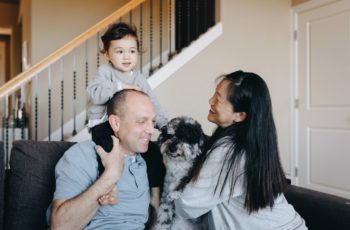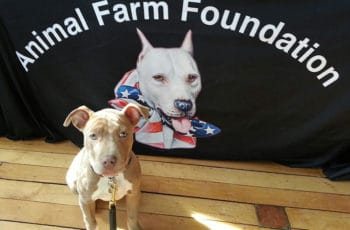One minute your dog is fine, the next they’re making strange snorting noises and looking distressed. You panic, wondering if something is seriously wrong. You are likely witnessing a phenomenon known as reverse sneezing. Reverse sneezing is a fairly common occurrence in dogs, but it can be quite alarming if you’re not familiar with it.
In this article, we’ll explore reverse sneezing, what it is, what causes it, and how to differentiate it from other respiratory issues. By the end, you’ll better understand this peculiar behavior and be able to comfort your four-legged friend.
What is Reverse Sneezing?
Reverse sneezing, also known as pharyngeal gag reflex or inspiratory paroxysmal respiration, is a respiratory event commonly observed in dogs. Unlike a typical sneeze, which expels air forcefully through the nose, a reverse sneeze is characterized by a sudden, rapid inhalation of air through the nose. This causes a distinct snorting or honking sound, often accompanied by the dog extending their neck and standing still or stiffening their body.
The episode typically lasts for a short duration, ranging from a few seconds to a minute, and can be quite alarming for dog owners witnessing it for the first time. While reverse sneezing may look and sound concerning, it is usually harmless and rarely requires medical intervention.
Most commonly seen in small to medium-sized dog breeds, reverse sneezing can occur at any age. It can happen spontaneously or be triggered by various factors, such as excitement, exercise, pulling on a leash, or irritants in the environment. Now that we know what reverse sneezing is, let’s explore some of the possible causes behind this curious behavior.
Causes of Reverse Sneezing
While the exact cause of reverse sneezing is not fully understood, several factors can contribute to its occurrence. One possible cause is the irritation or inflammation of the nasal passages or the back of the throat. This irritation can be triggered by various factors, including allergies, foreign objects, respiratory infections, or even sudden temperature changes.
Another potential cause is the presence of anatomical abnormalities, such as elongated soft palates or collapsed tracheas. These structural issues can make the airway more prone to irritation and lead to episodes of reverse sneezing. Additionally, certain dog breeds, such as brachycephalic breeds (dogs with short muzzles and flat faces), are more predisposed to experiencing reverse sneezing due to their unique respiratory anatomy.
It’s important to note that while reverse sneezing is usually not a cause for concern, it’s always a good idea to monitor your dog for any other accompanying symptoms that may indicate a more serious underlying issue. If your dog experiences frequent or prolonged episodes of reverse sneezing, shows signs of distress, has difficulty breathing, or exhibits other concerning symptoms, it’s best to consult with your veterinarian for a proper diagnosis and guidance.
How to Help Your Dog During a Reverse Sneezing Episode
Now that you understand what reverse sneezing is and some of its possible causes, let’s talk about how you can help your dog when they’re experiencing an episode. The most important thing to remember is to stay calm. While it may be distressing to witness, getting anxious or panicking can exacerbate your dog’s anxiety and prolong the episode.
See also

One effective method to alleviate a reverse sneezing episode is by gently massaging your dog’s throat or softly blowing in their face. This can help stimulate the swallowing reflex and encourage them to swallow, which can help relax the muscles involved in the reverse sneezing episode. You can also try gently blocking one or both nostrils for a brief moment, as this can prompt them to swallow and stop the reverse sneezing.
If your dog experiences frequent or prolonged episodes of reverse sneezing, it may be worth exploring potential triggers and minimizing their exposure to them. For example, if allergens or irritants in the environment seem to be the culprit, keeping your dog indoors during high pollen seasons or using air purifiers can help reduce their sensitivity and the frequency of reverse sneezing episodes.
Remember, while reverse sneezing can be unsettling to witness, it is usually harmless and doesn’t require medical intervention. However, if you have any concerns or if your dog’s reverse sneezing episodes become more frequent or severe, it’s always best to consult with your veterinarian for proper evaluation and guidance.
Conclusion
As dog owners, we want to ensure the well-being of our loyal companions. Understanding reverse sneezing and its causes can help us provide comfort and support to our dogs when they experience this peculiar behavior. Remember, reverse sneezing is usually harmless and often resolves on its own. By staying calm, knowing how to help during an episode, and monitoring for any concerning symptoms, we can ensure that our furry friends stay happy and healthy.


